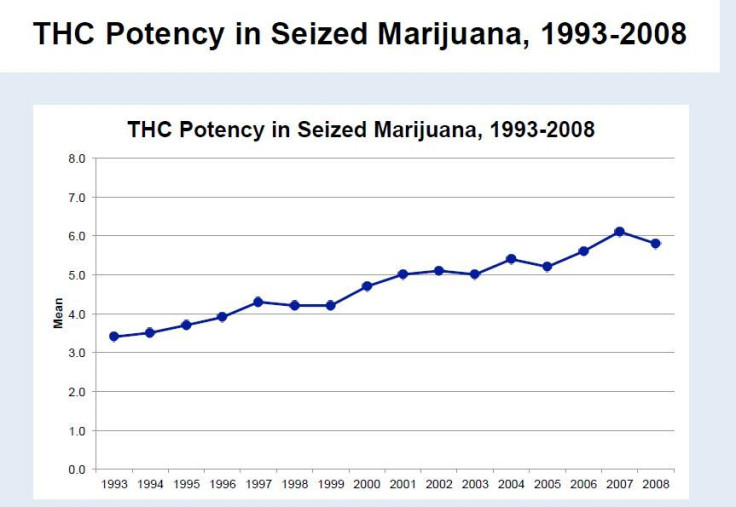More Adults Are Smoking Marijuana; Nearly 1 In 10 Adults Report Past-Year Use

American adults using marijuana during the past year more than doubled between 2001 and 2013, rising to 9.5 percent, estimated National Institutes of Health researchers. The new study also found about 30 percent of pot smokers are at risk of marijuana use disorders (abuse or dependence).
With nearly half the states (23) passing medical marijuana laws and four of these permitting recreational use, regulations and attitudes about marijuana are becoming more permissive. While some who favor legalization say cannabis can lead to problematic use for some, they also see cannabis abuse and dependence in different terms than other drugs.
“It’s possible to become dependent on marijuana but not in a physically addictive way that will cause the type of physical withdrawal you will see with harder drugs,” Evan Nison, a board member of National Organization for the Reform of Marijuana Laws (NORML) and Students for Sensible Drug Policy, told Medical Daily.
"People do become dependent on cannabis, meaning they come to rely on its affects," Kyle Sherman, co-founder and CEO of Flowhub (a grow management business), told Medical Daily. "The great thing is if you stop, nothing happens. You can just stop."
The NIH researchers take an opposite view, emphasizing potential harms of the drug.
"Fewer Americans view marijuana use as risky, although studies have shown that use or early use of marijuana is associated with increased risk for many outcomes, including cognitive decline, psychosocial impairments, vehicle crashes, emergency department visits, psychiatric symptoms, poor quality of life, use of other drugs, a cannabis-withdrawal syndrome, and addiction risk," wrote Dr. Bridget F. Grant, National Institute on Alcohol Abuse and Alcoholism, and her co-authors.
Importantly, a past NIH study that compared marijuana use in 1991-1992 to 2001-2002 showed no increase in prevalence. However, a 20 percent spike in marijuana use disorder occurred in that time. Researchers speculated this dramatic increase in abuse or dependence could be explained by how much more potent pot had become — levels of THC (Δ-9-tetrahydrocannabinol, the psychoactive ingredient in marijuana) had increased over time.

Since there are health implications to this use disorder, the NIH researchers required updated information about the prevalance of cannabis use and the rates of abuse or dependence. To obtain the necessary information, Grant and her colleagues used data from two iterations of the same national survey. The most recent 2012-2013 version included face-to-face interviews with 36,309 total participants.
What They Discovered
People who said they’d used marijuana in the past year doubled between 2001-2002 and 2012-2013, rising from 4.1 percent to 9.5 percent, the authors reported. Women, blacks, Hispanics, people living in the South, and middle-aged or older people accounted for most of this increase.
The prevalence of a diagnosis of marijuana use disorder during the past year also increased during the same time period, again nearly doubling from 1.5 percent to 2.9 percent. Nearly three out of every 10 Americans using marijuana had been diagnosed with a marijuana use disorder in the past year (about 6.8 million Americans).
“The findings indicate that the increased prevalence of marijuana use disorder over the last decade can be attributed to the increased prevalence of marijuana users in the general population,” wrote the authors, explaining this time the increasing risk of dependence or abuse was not linked to THC potency. According to the authors, there may be more medical and experimental users these days, or, perhaps, potency beyond a certain threshold may not increase the risk of abuse or disorder (since users tend to inhale less). This, they noted, needs further investigation.
Meanwhile, Nison believes legalization would allow policy makers to control distribution, purity, potency, and age of use, while also stopping black market cash flows to cartels and organized crime. “Regulating and controlling and taxing cannabis is the best public policy from many standpoints,” he said.
Source: Hasin DS, Saha TD, Kerridge BT, et al. Prevalence of Marijuana Use Disorders in the United States Between 2001-2002 and 2012-2013. JAMA Psychiatry. 2015.



























